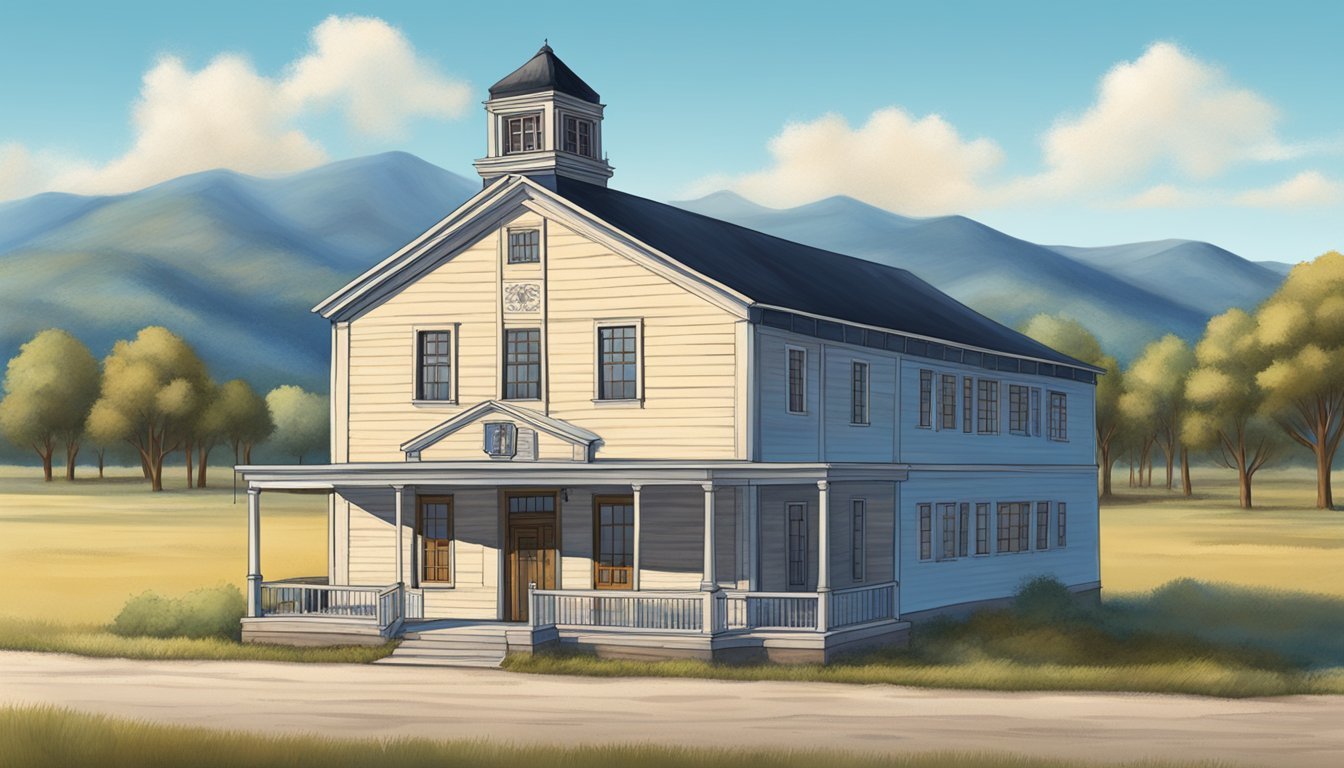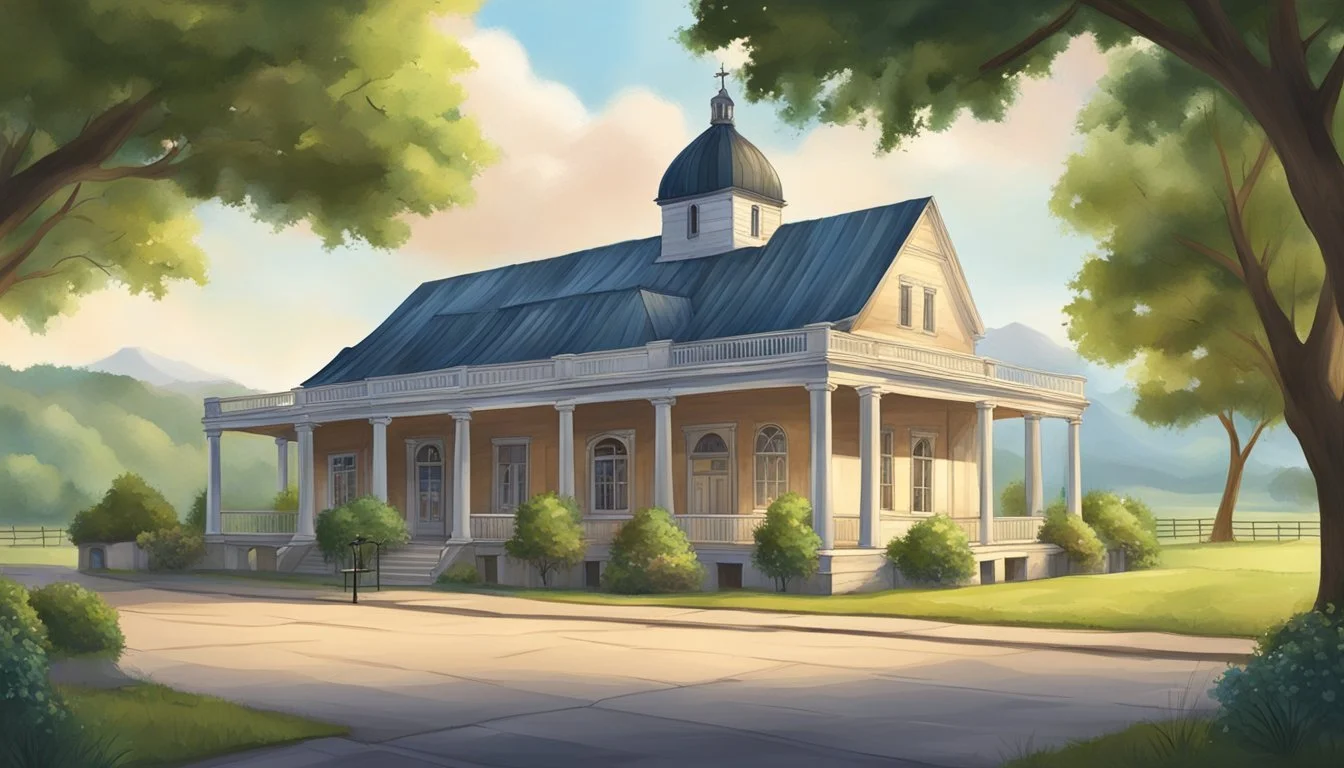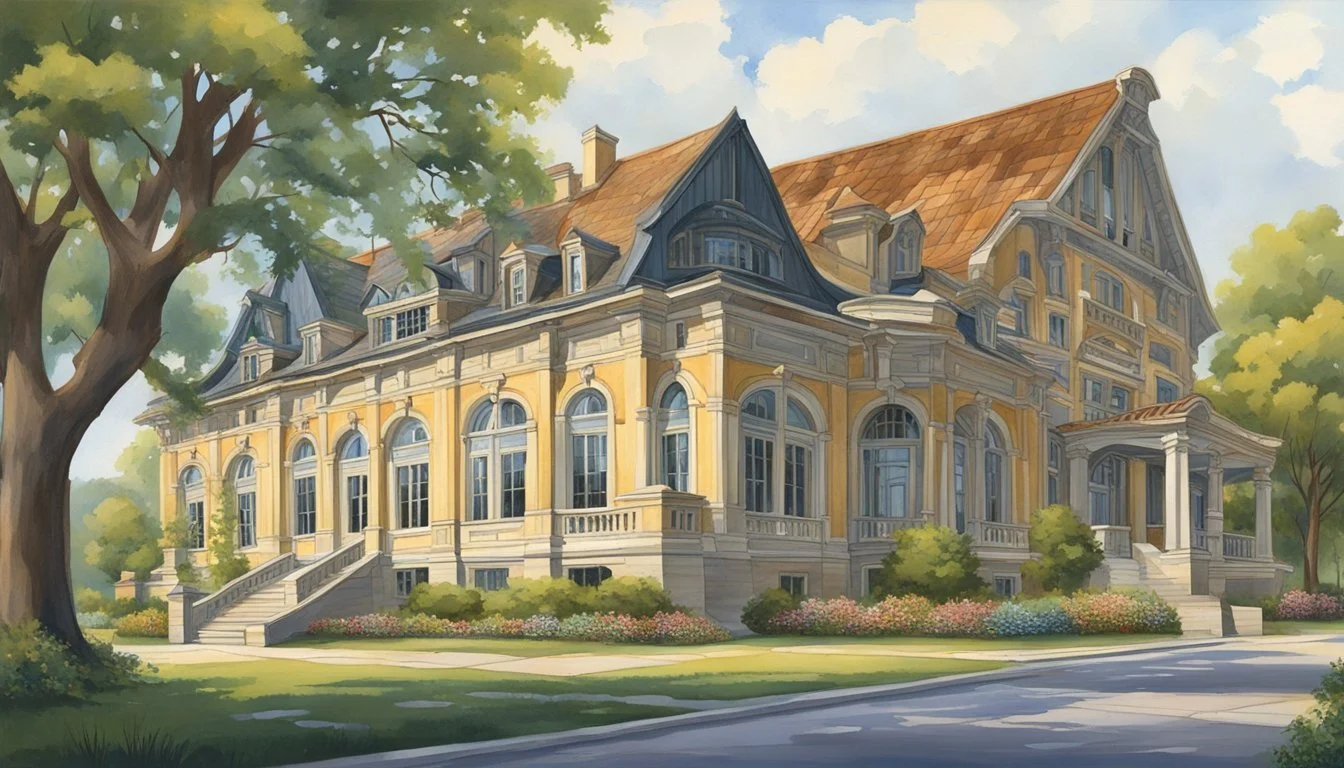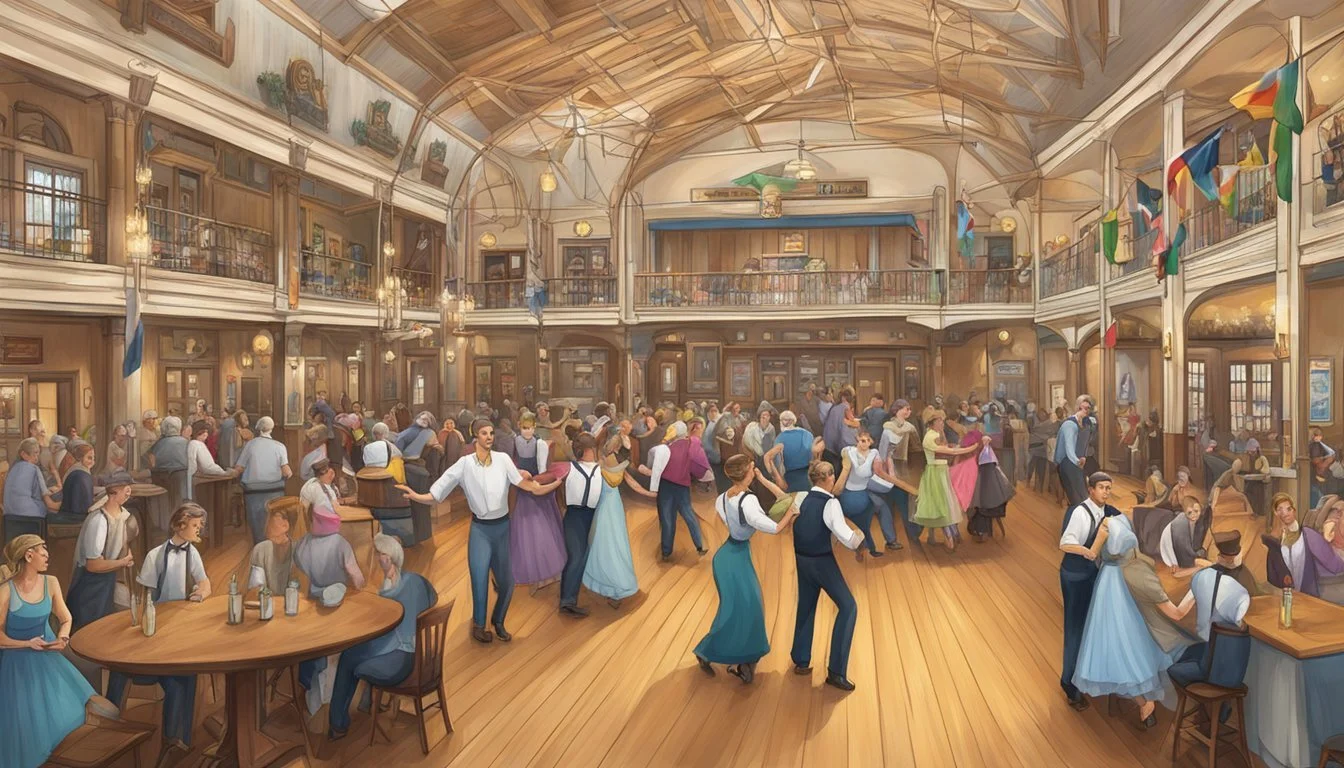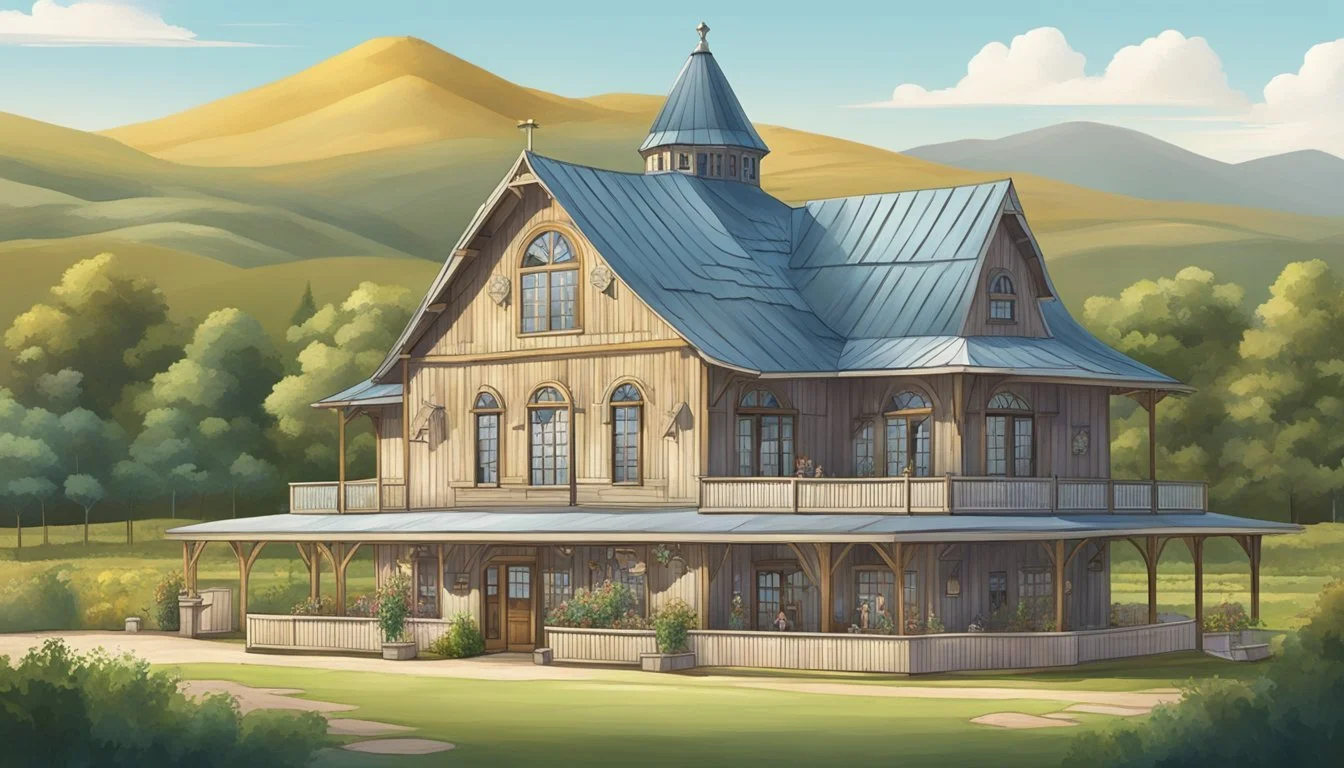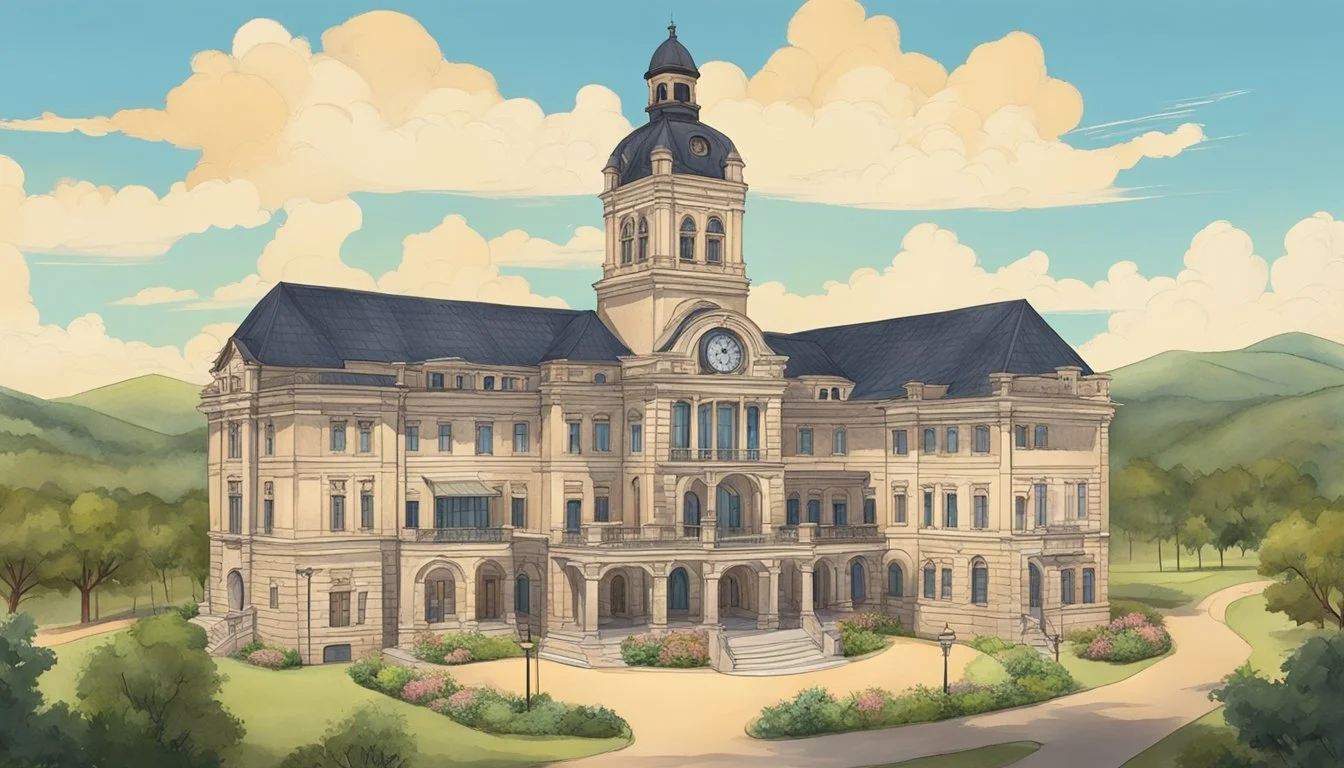German Architecture in Texas
Tracing Influence from Dance Halls to Courthouses
Texas, with its rich tapestry of cultural influences, is home to an impressive collection of German architectural heritage. This heritage, a testament to the sizable German community that settled in the state during the 19th century, is still evident today. From the quaint dance halls of the Hill Country to the imposing courthouses that grace various town squares, these structures embody a unique fusion of German design sensibilities with Texan materials and craftsmanship.
The architecture of Fredericksburg, for instance, showcases the lasting impact of German settlers, who integrated their Fachwerk building techniques to create structures that have withstood the tests of time. Similarly, the dance halls of Luckenbach, with roots dating back to the late 1800s, continue to resonate with the rhythms of a bygone era. These buildings are not mere relics but living components of community life that celebrate the intersection of German heritage and Texan culture.
The legacy of German architecture extends beyond aesthetics, reflecting the historical and societal fabric of Texas. Courthouses like the one in Gillespie County, built in 1882, demonstrate the influence of German craftsmanship, standing as landmarks to the rule of law and governance in these communities. Together, these sites of German architectural heritage in Texas offer a compelling narrative of history, community, and a culture preserved through its built environment.
Historical Context of German Settlement in Texas
German immigration to Texas began in the early 19th century and played a significant role in shaping the state's cultural and architectural landscape. The settlers were drawn by the promise of freedom from political and religious persecution and the opportunity for a new life in the fertile central Texas region.
Early Immigration and Settlement
German immigrants, motivated by the allure of political and religious autonomy, began arriving in Texas in significant numbers during the 1830s. Their journey, spurred by socio-political unrest and economic hardships in their homeland, led them to Texas seeking freedom and prosperity. During the 19th century, Texas represented a new frontier where these immigrants could establish communities, exercise cultural practices, and contribute to the region’s development in industry, education, and politics.
The settlers swiftly adapted to their new environment, yet they retained distinct elements of their German architectural heritage. They constructed their homes, schools, and places of worship, which reflected the design and functionality of their native land's vernacular structures.
Influential German Towns and Communities
Several key towns and communities emerged as nuclei of German cultural identity in Texas:
Fredericksburg: Established in 1846 and known for its Fachwerk buildings, a traditional German timber framing technique. It became a hub for German culture and commerce.
New Braunfels: A community that showcases a vibrant German heritage through its architecture and cultural landmarks.
Boerne: Founded in the 1850s, it emphasized the preservation of German traditions while adapting to Texan culture.
Castroville: While not exclusively German, it shared in the cultural diversity brought by European settlers, including Germans.
Gruene: Established by German immigrants as a cotton farming community, it has since become a historic district.
These towns played crucial roles in fostering the industry and education systems, which not only sustained their communities but also contributed to Texas’s overall growth. Their establishment led to the creation of social and cultural centers that maintained German traditions while integrating into the broader Texan society.
Through these communities, German immigrants had a lasting influence on Texas, seen today in the state's architectural, cultural, and societal fabric.
Cultural Heritage and Traditions
The architectural landscape in Texas is marked by the German cultural heritage, reflecting traditions and customs that have been preserved in various forms from language and education to festivals and the enduring legacy of music and dance.
Language and Education
German settlers placed significant emphasis on preserving their language. Schools were established to ensure that young Texans of German descent could retain the language of their ancestors. Language was not only a means of communication but also a tie to the cultural identity and values their forebears brought with them.
Festivals and Celebrations
Festivals like Oktoberfest and Wurstfest illustrate the vibrancy of German culture in Texas. Celebrations feature traditional German music, folk dances, and attire, embodying the festive spirit that German immigrants have retained. Oktoberfest celebrations, held in several towns, involve the community in activities that honor their rich cultural past.
Food and Cuisine
German influence is prominent in Texan cuisine, especially in the variety of sausages available. Traditional dishes like schnitzel and sauerkraut feature prominently at festivals and local German eateries. Culinary traditions serve as a bridge between generations and a preservation of heritage.
Sausages: Bratwurst, Knackwurst, Weisswurst
Breads: Pumpernickel, Pretzels
Desserts: Strudel, Black Forest Cake
Music and Dance
Music and dance halls serve as cultural hubs where traditions like polka and waltz are kept alive, often accompanied by the iconic sounds of the accordion. Legendary venues, such as the Luckenbach Dance Hall, hold historical significance as they continue to foster a deep connection to the community's German heritage through regular musical gatherings.
Architectural Influence and Styles
German settlers in Texas left an indelible mark on the region's architecture, evidenced by distinctive residential styles and robust public structures that continue to punctuate the landscape of the Texas Hill Country and beyond.
Residential Styles
In residential architecture, Fachwerk, also known as half-timbered construction, stands out as a hallmark of German influence. Fachwerk houses are characterized by their timber frame structures, where the spaces between the wooden timbers are filled with masonry or plaster. Although many German immigrants adapted to local materials and styles, some elements of traditional German construction remained prevalent. These dwellings often featured steeply pitched roofs and were sometimes combined with local stone, creating a distinctive, hybrid aesthetic that blended German and Texan influences.
Public and Community Structures
The German imprint extends beyond private residences into the public sphere, where community structures like dance halls, churches, schools, and courthouses showcase varying degrees of German architectural styles. German Texans were instrumental in erecting stately churches that often featured the use of Fachwerk in their design. Another unique contribution is the historic dance halls, varying architectural pieces from simple rectangles to complex dodecagonal structures. These halls served as community centers and remain symbols of cultural heritage. Additionally, main streets in towns like Fredericksburg still display a range of German architectural influences on key buildings such as stores and post offices. These structures often feature the enduring Fachwerk method, providing functional use while serving as visual reminders of the region's German roots.
German Influence on Texas Industry
German immigrants significantly shaped the Texas industry, bringing expertise in agriculture, particularly brewing, and fostering a culture of craftsmanship and trades that has left a lasting impact.
Agriculture and Brewing
German settlers brought advanced farming techniques to Texas, significantly influencing its agricultural industry. Brewing became a notable enterprise due to these settlers' tradition and knowledge in producing beer. They established some of Texas's first breweries, contributing to a thriving brewing industry that continues to this day. Texas’s climate was conducive to cultivating barley and hops, essential ingredients in beer making, allowing Germans to apply their traditional brewing methods.
Craftsmanship and Trades
Germans excelled in various trades, bringing a tradition of craftsmanship that impacted Texan industry. The construction sector, including the use of limestone, was markedly advanced by the Germans. Their skills in masonry and carpentry were essential in erecting durable buildings and structures across Texas. Trades like blacksmithing, woodworking, and leatherworking flourished in communities where German settlers established their presence, leaving a legacy of high-quality German craftsmanship that is still admired in Texas today.
Social Hubs: German Dance Halls in Texas
In Texas, dance halls built by German settlers in the 19th and 20th centuries have served as pivotal social hubs, bringing communities together through music, dance, and social gatherings. These halls have retained their historical significance and continue to influence Texan culture today.
Historic Dance Halls
Sengelmann Hall, dating back to 1894, and Luckenbach Dance Hall, established in 1887, are prime examples of historic German dance halls in Texas. These buildings not only hosted traditional dances but also acted as meeting places for local German communities. Gruene Hall, built in 1878 in New Braunfels, holds the title for the oldest continuously operating dance hall in Texas. With its authentic design, the hall provides a vivid glimpse into the past.
Historic dance halls in Texas typically feature:
Open floor plans to accommodate large dance groups
High-pitched tin roofs and wooden structures
Stage areas for live music performances
Modern-Day Use and Preservation
In the present day, these dance halls often still function as important cultural centers. For instance, Gruene Hall is a major music venue, showcasing both established and up-and-coming artists. Efforts to preserve the cultural and architectural heritage of these halls have increased. Texas dance hall preservation organizations actively work to maintain and restore these historic sites, recognizing their value as both community centers and tourism attractions.
Preservation efforts focus on:
Dance Hall Preservation Actions Taken Luckenbach Dance Hall Maintenance of original structure and hosting regular events Sengelmann Hall Restoration of interior and revival of cultural activities Gruene Hall Conservation of historic character; regular music performances
These halls remain important social hubs where Texans celebrate their heritage and come together for community events. Their continued use and preservation signify the enduring legacy of German culture in Texas.
Significance in Texan Communities
The German influence in Texas extends well beyond architecture, deeply embedding itself into the social fabric of Texan communities through significant figures, education systems, and economic contributions.
Prominent German-Texan Figures
Prominent individuals of German-Texan ancestry have made their mark on Texas culture and community life. For instance, Willie Nelson, a musician with German-Texan roots, has contributed immensely to the country music scene, fostering a sense of community and shared heritage through his art. Others have played pivotal roles in local governance and in preserving the German Texan cultural heritage, thereby impacting the population's sense of identity and continuity.
Education and the German Language
Education played a crucial part in disseminating German culture within Texan society. Many towns, such as Fredericksburg and New Braunfels, originally established by German settlers, included the German language in their school curriculums. This practice not only helped in maintaining the linguistic aspect of their heritage but also in creating bilingual communities that enriched the local culture and contributed to broader educational perspectives.
Economic Contributions
German settlers significantly contributed to the Texas economy. These contributions can be seen in a variety of sectors, including agriculture, commerce, and the arts. German-Texans established businesses, built dance halls that served as economic and cultural hubs, and influenced local architecture, adding to the tourism industry. Their economic activities helped support the community, sustaining local farmers and merchants, thus playing a central role in the development of many Texan regions.
Courthouses: Symbols of German-Texan Governance
In the heart of Texas, the influence of German settlers on local architecture is unmistakable. Courthouses, in particular, stand as imposing emblems of both governance and Germanic architectural heritage. These structures, scattered through the Texas Hill Country and beyond, serve not only as functioning hubs of local government but also as cultural beacons reflecting the region's ethnic diversity.
The construction materials of these courthouses, often featuring local limestone, symbolize the German-Texan commitment to utilitarianism and durability. The limestone used is not only practical, adapting well to the regional climate, but also aesthetically aligning with traditional German building techniques.
Feature Description Architecture Romanesque Revival and other styles influenced by German design Governance Serves as centers for local justice and administration Material Limestone, known for its resilience and local availability Significance Symbolic of German-Texan cultural and governmental influence
Many of these courthouses occupy central squares in county seats, selected in times when town founders donated land for civic enterprises. The architecture is often a blend of Romanesque Revival with the distinctive features of German vernacular design—giving each courthouse a signature appearance that makes a confident statement of identity and purpose.
The historic county courthouses found in areas such as Navarro, Bosque, and other counties, exemplify the intersection of style, substance, and civic order, offering unique insights into the German-Texan governance. These government buildings are more than functional edifices; they are emblems of a cultural legacy etched in stone.
Preservation Efforts and Challenges
The preservation of German architectural heritage in Texas faces ongoing challenges. Efforts to maintain these structures are spearheaded by advocacy groups and restoration projects, but are often hindered by natural and man-made threats.
Advocacy Groups
Texas Dance Hall Preservation, Inc. operates as a non-profit organization dedicated to preserving historic Texas dance halls, shining a light on their significance within German-Texan culture. It was established by key individuals with a passion for historic preservation and Texas music history. Their efforts include hosting events and educational programs designed to foster public awareness and appreciation for these cultural landmarks.
Restoration Projects
Restoration projects are pivotal to preserving the integrity of German architecture in Texas. Examples include the Luckenbach Dance Hall, which has remained a vibrant part of Fredericksburg's musical heritage since 1887, and the Pioneer Museum, which dedicates itself to the conservation of artifacts and buildings significant to German immigrant culture.
Key Restorations:
Structural reinforcement
Aesthetic refurbishment
Updating facilities for modern use
Natural and Man-Made Threats
Preservation efforts are continually threatened by natural and man-made threats. Fires pose one of the most destructive risks, potentially decimating historic structures with centuries-old legacies. Additionally, development pressures and neglect contribute to the loss of these important cultural sites, making the role of preservationists critical in the battle against time and the elements.
German-Texan Influence Beyond Architecture
The German influence in Texas extends far beyond the state's architectural heritage, shaping cultural and artistic realms significantly through literature, opera, and the arts.
Literature and Publication
German settlers in Texas brought with them a rich tradition of literature and publication. They produced various literary works, newspapers, and periodicals that contributed to the cultural landscape of Texas. Notably, German-language newspapers flourished in the 19th and early 20th centuries, serving immigrant communities and keeping the language alive.
Newspapers: German-language publications like Texas Staats-Zeitung.
Periodicals: Cultural and literary content promoting German heritage.
The Arts and the Opera
The German community had a profound impact on the arts and opera in Texas. They introduced classical music and opera to the region, enriching its cultural fabric. Composers such as Johann Sebastian Bach found a new audience among German Texans.
Opera: Hosting performances and nurturing an appreciation for the art form.
Classical Music: Legacy of composers like Bach, influencing local music scenes.
Operatic societies and music clubs, many of which found their origins in German heritage, became cultural cornerstones, offering not just entertainment but also a sense of continuity for the traditions immigrants brought with them.
Conclusion
The imprint of German culture on the Texas landscape endures through its architecture, a testament to the state's rich ethnic mosaic. The vernacular structures manifest a blend of German craftsmanship and Texan spirit. From the Fachwerk-style buildings in Fredericksburg to the iconic dance halls that promote communal gatherings, German architecture contributes to the state's distinctive cultural tapestry.
Key architectural sites uphold historical significance and community pride. The Gillespie County Courthouse in Fredericksburg, built in 1882, and the renowned Luckenbach Dance Hall, established in 1887, continue to serve as vibrant venues for cultural exchange. These historical edifices not only contribute to cultural conservation but also play a role in maintaining community bonds and fostering social interaction.
German impact extends to aspects of everyday life, evident in a variety of half-timbered construction styles witnessing everyday community activities. The architecture is a confluence point where the past converses with the present, offering a glimpse into the settlers' aspirations and the continuity of their heritage in a modern Texan context.
In summary, German architecture in Texas is emblematic of a deeper historical narrative that remains relevant today. It underlines the significance of preserving cultural identity within an evolving architectural landscape, ensuring the endurance of this multifaceted heritage for future generations.

